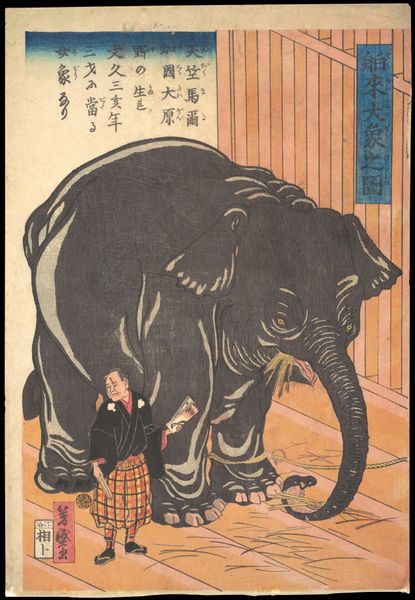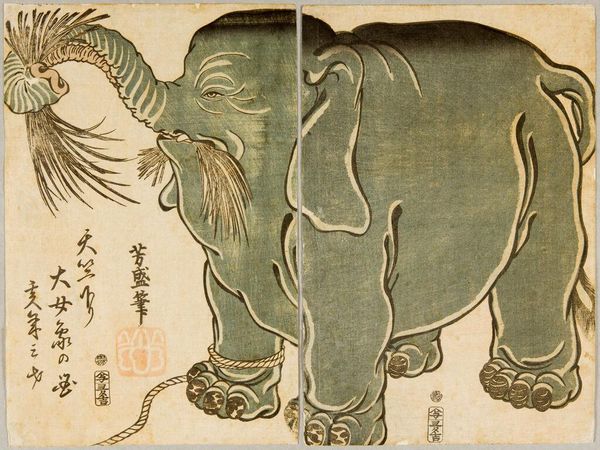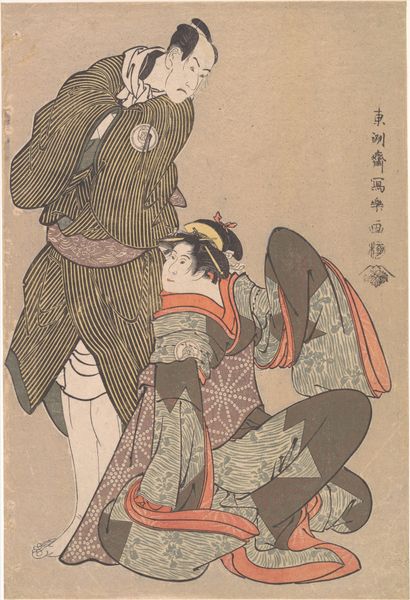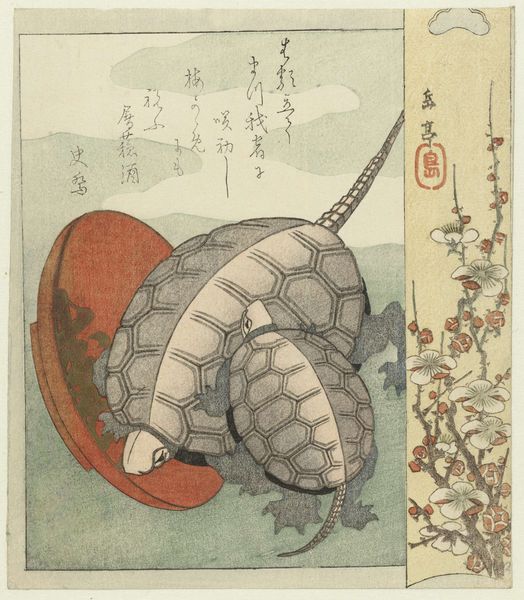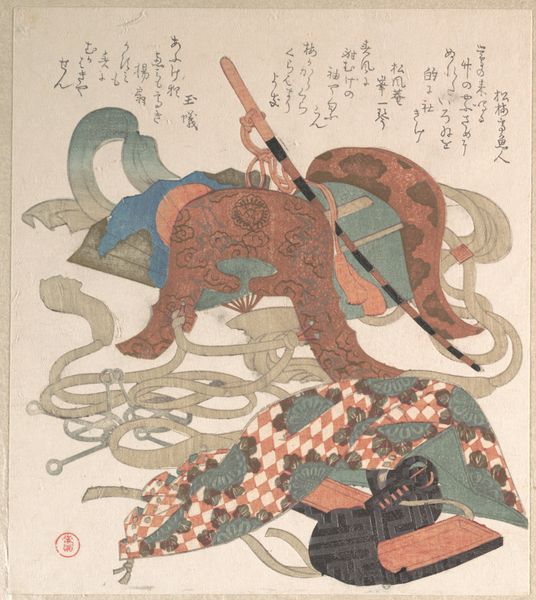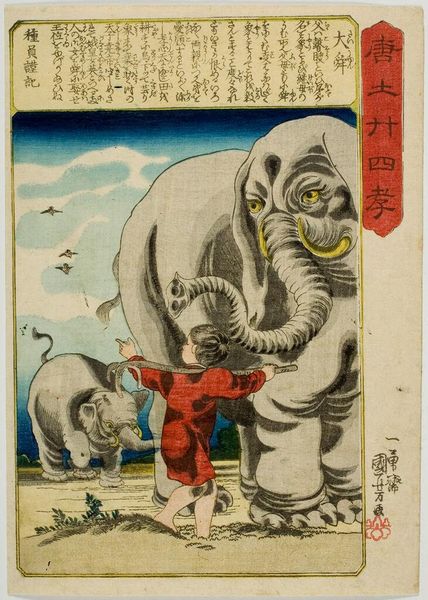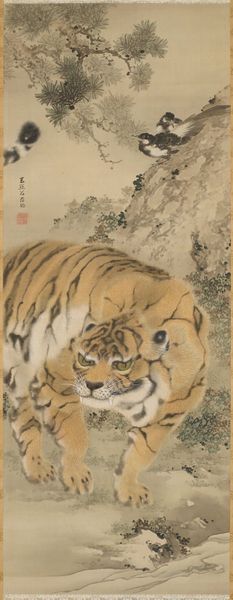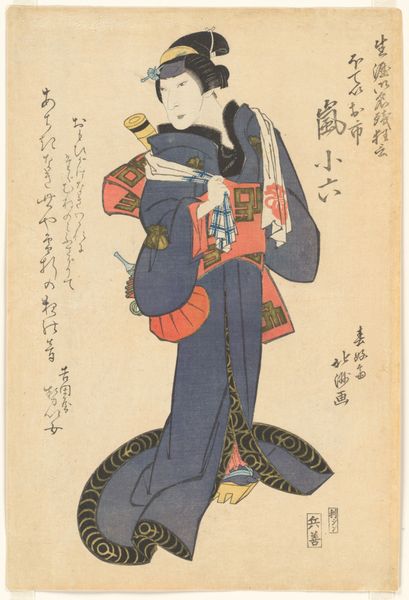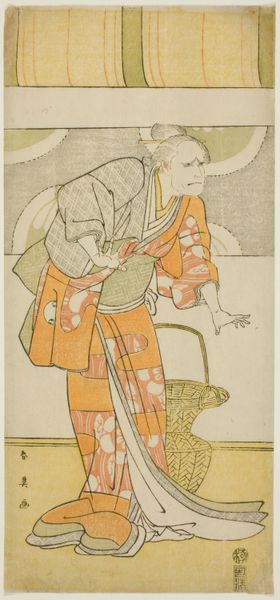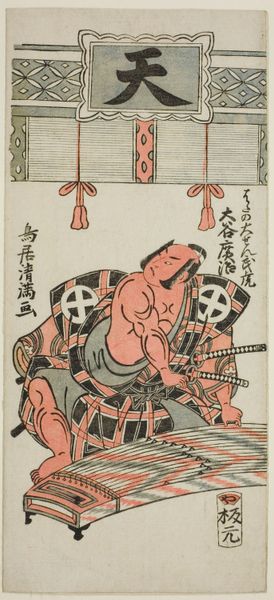
Picture of Large Elephant from India (Tenjiku hakurai dai zo no shashin), An Attraction at Ryogoku in the Eastern Capital (Toto Ryogoku mimono) 1863
0:00
0:00
print, woodblock-print
# print
#
asian-art
#
ukiyo-e
#
folk-art
#
woodblock-print
#
naive art
Copyright: Public Domain
Curator: Looking at this woodblock print, there’s a striking simplicity that immediately catches the eye. What's your first reaction? Editor: It's melancholy. There is an awkwardness to it. The heavy beast on an empty field feels strangely lonely. I wonder about the politics inherent in depicting an elephant like this for a Japanese audience at this time. Curator: Utagawa Yoshikazu created this print around 1863. The full title translates to "Picture of Large Elephant from India (Tenjiku hakurai dai zo no shashin), An Attraction at Ryogoku in the Eastern Capital (Toto Ryogoku mimono)." It depicts an elephant brought to Japan, quite a novelty, and exhibited as a spectacle in Ryogoku. Editor: So, this artwork functions as both a portrait and a document of cultural exchange, but also a clear display of power dynamics and exoticism. What did the arrival of the elephant signify in broader social and political currents? Curator: It reflected Japan's opening to the world, fueled by a burgeoning interest in the exotic and the foreign, carefully managed to uphold the Tokugawa shogunate's image of control. Zoos hadn’t become common yet. These displays of power and wealth would attract large crowds. Editor: The gaze of the elephant is heavy. There is something sorrowful in the animal’s eye. To me, it emphasizes a sense of displacement, of being out of place. How does the visual language—the lines, colors, composition—contribute to how it was understood by its original viewers? Curator: Yoshikazu employs the ukiyo-e style—typical for its time—using woodblock printing to mass-produce affordable art. This helped disseminate the image of the elephant far and wide, impacting popular understanding of what India, what “foreignness”, even meant. The rather flattened perspective contributes to a sense of artifice; a controlled view of a wild animal. Editor: I agree. By stripping away its context, reducing it to an “attraction,” Yoshikazu is making a statement. It forces us to reflect on exploitation, perhaps unintentionally highlighting the elephant’s plight rather than celebrating exoticism. Curator: Perhaps, Yoshikazu captured more than intended; maybe there's a subtle critique hidden within this seemingly straightforward depiction. This print certainly offers more to discuss beyond initial impressions. Editor: Yes, precisely. By acknowledging the layers of meaning and by recognizing its cultural context, we can question whose gaze really matters. It's an excellent invitation for deeper thought.
Comments
No comments
Be the first to comment and join the conversation on the ultimate creative platform.
